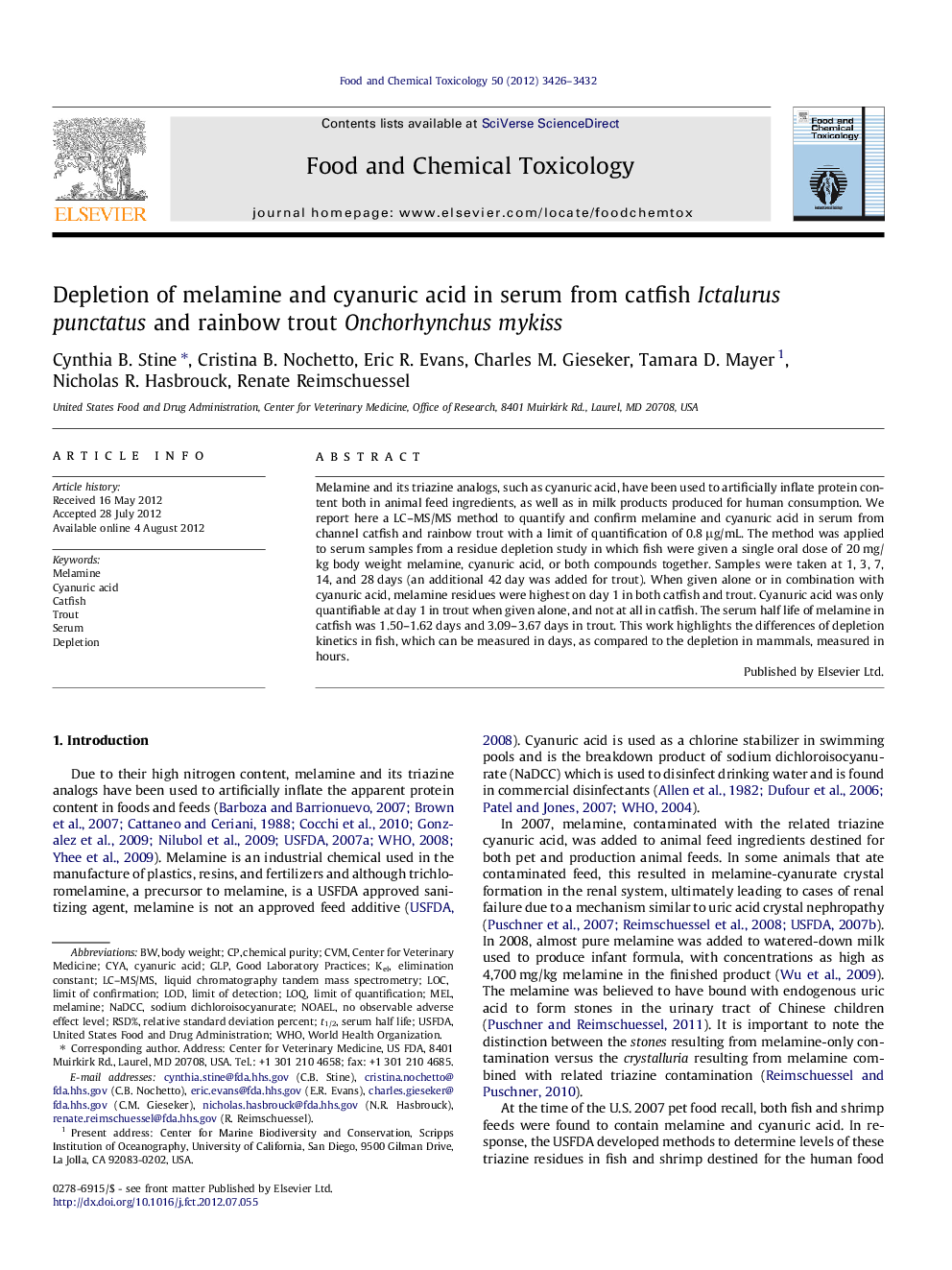| Article ID | Journal | Published Year | Pages | File Type |
|---|---|---|---|---|
| 5852667 | Food and Chemical Toxicology | 2012 | 7 Pages |
Melamine and its triazine analogs, such as cyanuric acid, have been used to artificially inflate protein content both in animal feed ingredients, as well as in milk products produced for human consumption. We report here a LC-MS/MS method to quantify and confirm melamine and cyanuric acid in serum from channel catfish and rainbow trout with a limit of quantification of 0.8 μg/mL. The method was applied to serum samples from a residue depletion study in which fish were given a single oral dose of 20 mg/kg body weight melamine, cyanuric acid, or both compounds together. Samples were taken at 1, 3, 7, 14, and 28 days (an additional 42 day was added for trout). When given alone or in combination with cyanuric acid, melamine residues were highest on day 1 in both catfish and trout. Cyanuric acid was only quantifiable at day 1 in trout when given alone, and not at all in catfish. The serum half life of melamine in catfish was 1.50-1.62 days and 3.09-3.67 days in trout. This work highlights the differences of depletion kinetics in fish, which can be measured in days, as compared to the depletion in mammals, measured in hours.
⺠When given alone at 20 mg/kg body weight, serum melamine residues were unquantifiable at day 14 in both catfish and trout. ⺠When given with cyanuric acid, serum melamine residues were unquantifiable at day 7 in catfish and day 28 in trout. ⺠Cyanuric acid residues were only quantifiable on day 1. ⺠The serum half lives of melamine in catfish and trout ranged from 1.50-3.67 days.
